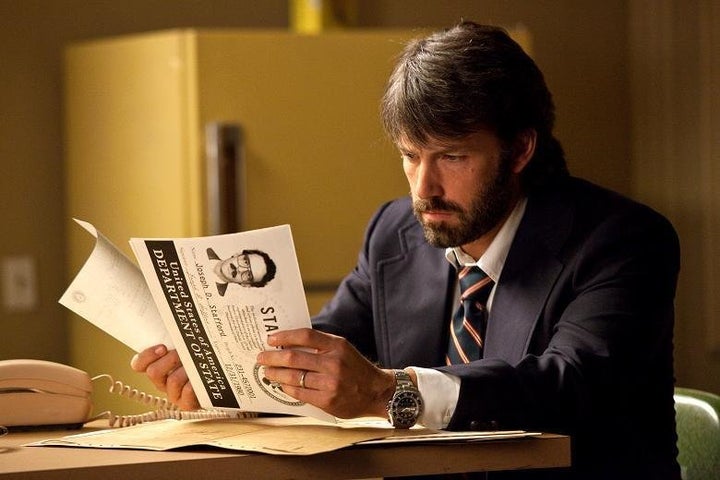
It's been quite a year for shape-shifting at the movies.
Look at Ben Affleck, an unmistakable non-ethnic Caucasian, who recently played the role of Tony Mendez in the academy award nominated film Argo. Mr. Mendez's real father was Mexican American. Moctesuma Esparza, a film producer and CEO of Maya Cinemas, recently commented on NPR's Studio 360, "Mexican-Americans and Latinos aren't getting a fair shake in Hollywood to create careers and become stars."
So should Mr. Affleck have not cast himself in this juicy role in order to give other Latino actors a shot at it? One could also argue that Daniel Day-Lewis, a British actor cast as Abraham Lincoln, might have considered declining. Although Lincoln's ancestry was English, the world view of an American is quite different from that of an Englishman. Finally, we could ask why Sally Field, a 66-year-old woman, was cast as the wife of Daniel Day Louis, who is 55, when Mary Todd Lincoln was in fact nine years younger than Abraham Lincoln.
It is an actor's job to enter the world of make believe and then in turn to make us believe. But I think we have to consider that a commitment to diversity in casting, especially when the role actually calls for a minority, will both enrich and add integrity to the mainstream American film experience.
As someone who trains actors, I encourage color-blind casting, mixed casting, switched casting, as well as casting that is appropriate in relation to the playwright's or screenwriter's vision. I do this in order to expand and deepen the actor's imagination, world view, understanding of humanity and skills in transforming themselves.
The languages, accents and dialects of different races and ethnicities have a great deal to do with how people perceive themselves and the world around them. If you are a Mexican American who is still in touch with his/her native Spanish, there is an easy rise and fall in melody in your tone, perhaps a slight nasality and an easy relationship to consonants. Try entering the accent yourself and you will feel it.
This is an important aspect in transformational acting. It is not mimetic, but full bodied and of the spirit. An audience does not want to be bluffed; it wants to be moved into connecting to an actor's human instinct. If the actor invests his/her spirit as well as skill in the act of transformation, the audience will feel humanly connected and will follow him/her anywhere on the character's journey.
In the theatre actors are, for the most part, expected to embrace transformation and leave their personas behind. Directors might cast color and gender blind, as in the most successful portrayal of Rosalind I ever saw, played by Adrian Lester in Cheek by Jowel's production of As You Like It. Lester, a thirty-something black British actor, was entirely believable as a 16 year old English girl roaming the countryside in exile. His committed investment of his being in Rosalind's circumstances was transcendent. His vocal and physical life was authentic because he believed the circumstances. And he took his entire audience joyously with him on his (or really her!) journey.
This kind of transformation is not common on the silver screen; largely because people tend to pay to see stars play themselves, not transform themselves. And Hollywood producers and directors tend to accept the formula that makes money. This commitment to deep rooted transformation is the biggest difference between film and theatre actors and is often quite apparent when movie stars come to Broadway. It is hard for many of them to leave their personas behind to embrace transformation.
In the theatre many of us are committed to mixed race and color blind casting as well as to the retelling of stories through a race not prescribed by the playwright. The Broadway mixed race production A Streetcar Named Desire (2012) and switched race Cat on a Hot Tin Roof (2008), both American Southern white classics, are both excellent examples of this kind of creativity. These productions were wonderful eye openers and drove home how strong the filter of race is and doesn't have to be in America.
Because film does not embrace the transformational actor as fully as theatre does, opportunities for actors of color are not as extensive on the silver screen. As far as I know, Steel Magnolias (2012) has been the only switched race movie in recent years and I am not aware of any Hollywood movies that have practiced color blind casting. Film producers and directors are not taking the same kind of risks, in terms of casting choices, as theatre does. So, when a screen-play actually calls for actors of color or ethnicity, producers and directors need to consider the "f" word and do what is fair. With all due respect to Mr. Affleck for directing Argo, could he have not cast a Latino actor, rather than himself? I think it would have shifted the film from being somewhat of a vanity production, to a film with more gravitas. I know Hollywood is largely about making money, and it takes a brave soul to step outside of the box. But I, for one, am looking for the brave souls in Hollywood who will hire ethnic actors to represent themselves.